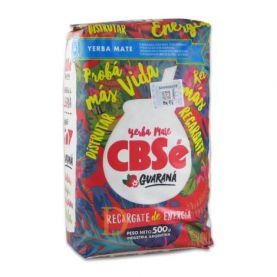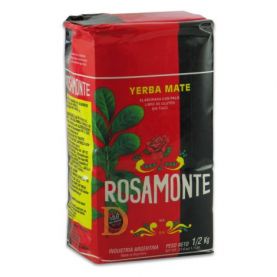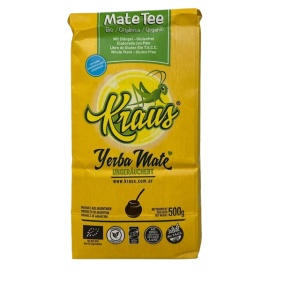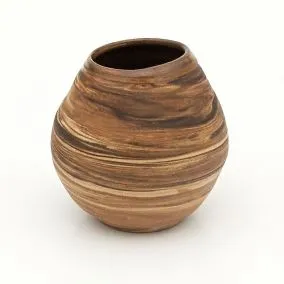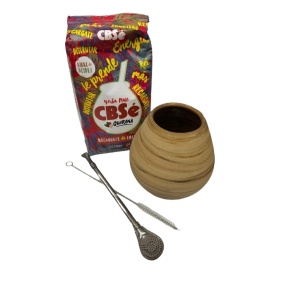Have you decided to try this traditional South American drink? We'll tell you what to choose and what ingredients to expect.
CLASS TEA
When you take a closer look at loose yerba mate, you'll no doubt find that it contains a variety of ingredients. And rightly so. Yerba mate is almost always a mixture of dried leaves, stems and a little tea "dust."
Leaves - chopped into small pieces, they are responsible for the main flavour and aroma of the drink.
Stems - give the blend a lighter colour, so the higher the proportion of stems, the lighter the colour of the initial blend. But definitely don't see the admixture of stems as a mistake or an overall "cheapening". Stems have their place and importance here. They add a more subtle flavour to the resulting drink.
Powder - this is actually finely ground leaves and stems that will make for a more concentrated infusion.
Accordingly, traditional yerba mate is roughly 65% leaves, 25% stems and 10% dust. Of course, the proportions vary from product to product. And certain types of yerba mate are primarily based on a different ratio of ingredients. For example:
Yerba matéSin Palo, which contains virtually no stems, 90% leaves, 5% dust and 5% stems. It will be especially loved by those who like to enjoy a more intense drink with a distinct aroma and increased stimulant effects.
YERBA MATÉ
Yerba mate is often sold in blends with other ingredients, most commonly dried fruit or herbs (such as mint or guarana). In this case, the yerba mate is usually 60% yerba mate and 40% other ingredients.
GETTING STARTED
If you're just planning to get acquainted with this drink, be sure to prefer the traditional version containing the stems for a smoother, sweeter taste to start. With a higher proportion of leaves comes a more pronounced bitterness to the drink, which is usually appreciated by more experienced drinkers.
WHAT CONTAINS YERBA MATE
Now that you know what to look for when choosing a yerba mate, we can tell you what such a drink contains...
Xanthines - These substances act as stimulants, and include theobromine and caffeine, which are around 80mg in one cup of the drink, roughly the same amount as in coffee.
Saponins - the substances that give the drink its typical bitter taste, have strong anti-inflammatory effects and lower cholesterol.
Polyphenols - substances with strong antioxidant effects that have been associated with reducing the risk of developing a range of diseases.
Caffeoyl derivatives - they are also among the effective antioxidants. Overall, yerba mate is comparable to green tea in terms of these compounds.
As far as vitamin and mineral content is concerned, you can look forward to vitamin C, B vitamins, potassium, magnesium, calcium, phosphorus and iron in yerba maté drinks. Just keep in mind that the proportion of these micronutrients is very small. Yerba maté as a source of vitamins and minerals will therefore not significantly affect your overall intake. However, this does not diminish its benefits at all.
It remains a refreshing, flavourful and healthful drink which is gaining more and more fans. Will you expand their ranks?
Yerba Maté CBSé Energia Guarana is also a strong stimulating drink thanks to the added Guarana .
Yerba Maté CBSé Energia Guarana is also a strong stimulating drink thanks to the added Guarana .
Yerba Maté Rosamonte has an intense and deep flavour in which you can feel the subtle notes of rose, thanks to the full maturity of the leaves, to which rosewood is added. Perfectly stimulating and refreshing.
Yerba Maté Rosamonte has an intense and deep flavour in which you can feel the subtle notes of rose, thanks to the full maturity of the leaves, to which rosewood is added. Perfectly stimulating and refreshing.
The production of Yerba mate Kraus began at the beginning of the 20th century. The company follows a family tradition and adheres to sustainable farming principles when working on its land. They are constantly looking for new ways to protect and sustainably fertilize the land.
The production of Yerba mate Kraus began at the beginning of the 20th century. The company follows a family tradition and adheres to sustainable farming principles when working on its land. They are constantly looking for new ways to protect and sustainably fertilize the land.
The best way to enjoy Maté tea is certainly from the traditional South American vessel of Kalabasa. Sipping Maté with this utensil will add a whole new dimension to your tea experience :)
The best way to enjoy Maté tea is certainly from the traditional South American vessel of Kalabasa. Sipping Maté with this utensil will add a whole new dimension to your tea experience :)
Already the Indians understood the magical and healing powers of the South American drink yerba mate. Give your loved ones a healthy boost with a yerba mate kit, where you will find everything you need for the perfect preparation.
Already the Indians understood the magical and healing powers of the South American drink yerba mate. Give your loved ones a healthy boost with a yerba mate kit, where you will find everything you need for the perfect preparation.
Yerba Mate CBSé Energy Guarana 500g
Yerba Mate Rosamonte 500g
Yerba Mate BIO KRAUS ORGANICA 500g
Kalabasa Ceramics
Yerba Mate Gift Set



























































































